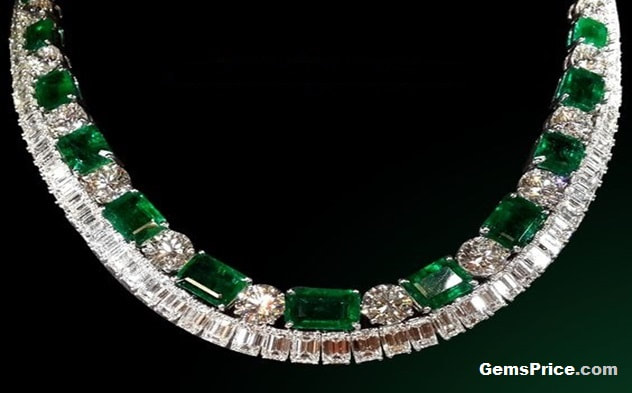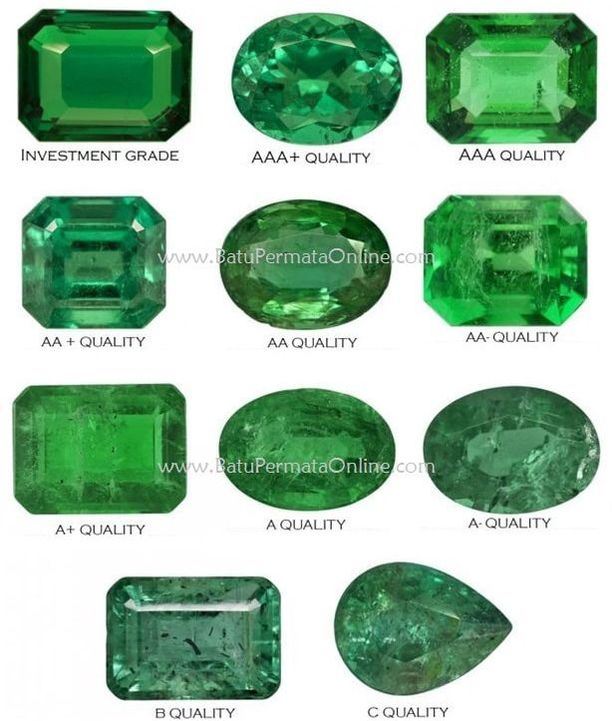Jewel beauty in Clarity Emerald
Clarity refers to the presence of inclusions or the lack of them. Emeralds that have less inclusions are naturally more valuable and more rare. Heavily included emeralds can look less beautiful as their ability to reflect light is lessened and their color is hidden by the inclusions.
Emerald tends to have a lot of inclusions (Fiber stone) or also called Crack / Cracks in rocks and surface cracks. Unlike Diamonds, where the enlargement standard, which is 10x magnification, is used to assess clarity, the emerald is judged by the eye. So, if the emerald does not have an inclusion that is visible to the eye (assuming normal visual acuity), it is considered imperfect. Rocks that lack fissures (cracks) of broken surfaces are very rare and therefore almost all emeralds are treated ("oiled") to increase their clarity. Inclusions and gaps in the emerald are sometimes described as jardin (French for the garden), because of their mossy appearance.
Emerald tends to have a lot of inclusions (Fiber stone) or also called Crack / Cracks in rocks and surface cracks. Unlike Diamonds, where the enlargement standard, which is 10x magnification, is used to assess clarity, the emerald is judged by the eye. So, if the emerald does not have an inclusion that is visible to the eye (assuming normal visual acuity), it is considered imperfect. Rocks that lack fissures (cracks) of broken surfaces are very rare and therefore almost all emeralds are treated ("oiled") to increase their clarity. Inclusions and gaps in the emerald are sometimes described as jardin (French for the garden), because of their mossy appearance.
The perfection is unique for each Emerald and can be used to identify certain stones. The eye stone is clean of clear primary green hues (as described above), with no more than 15% of the hue or secondary combination (either blue or yellow) with a medium dark tone, the highest price. The relative non-uniformity motivates the cutting of the emerald in the form of cabochon, not in terms of aspects. Multi-storey emeralds are most often given oval pieces, or signature emerald pieces, rectangular pieces with sides around the top edge.
Over 99% of emeralds have surface reaching fractures that are treated with oil, wax, resin, or something else entirely. This is done to improve the clarity of emeralds, and usually termed as enhancement instead of treatment is the sales sector of the gem industry.
Over 99% of emeralds have surface reaching fractures that are treated with oil, wax, resin, or something else entirely. This is done to improve the clarity of emeralds, and usually termed as enhancement instead of treatment is the sales sector of the gem industry.
|
Emerald usually contains inclusions that are visible to the eye without help. Therefore, trade and some consumers understand and accept the presence of inclusion in emeralds. Emeralds with inclusions hardly look like emeralds are very valuable because they are very rare.
Colored stones, transparency and clarity are closely related. This is especially true for emeralds. Trade generally accepts inclusions with eyes seen on emeralds with higher quality. But if inclusion has a negative effect on transparency and clarity, they also dramatically reduce value. It is normal and natural for Emeralds to have inclusions and also surface gaps. There is a bright side to this, which is the fact that it is real emerald (Natural Emerald), unlike diamonds, judged by the eyes and not with the aid of a magnifying device. What is needed for an emerald to be considered perfect is to look clean, without visible inclusions, to the eyes. High-quality emeralds, which are eye clean stones, show clear primary green, do not contain more than 15% secondary colors, and display a medium dark tone, requiring exorbitant prices. |




